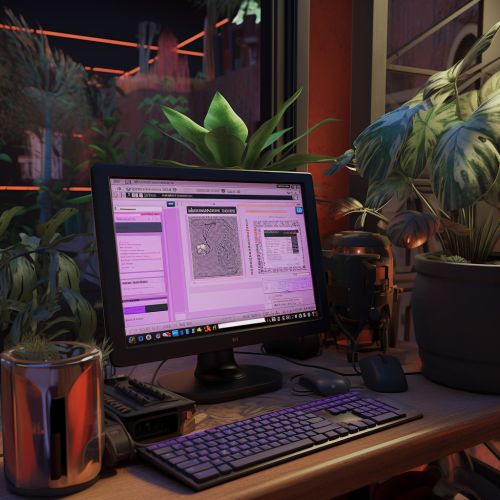Computer Vision
Overview
Computer vision is a field of artificial intelligence (AI) that trains computers to interpret and understand the visual world. By acquiring, processing, analyzing, and understanding digital images, machines can accurately identify and categorize objects, and then react to what they "see."


History
The concept of computer vision has been around since the 1960s, with the first notable work being done by Larry Roberts at MIT. His thesis, "Machine Perception of Three-Dimensional Solids," outlined how a computer could infer three-dimensional shapes from a two-dimensional image, a fundamental aspect of computer vision.
Techniques
Computer vision employs various techniques to solve specific vision tasks. These techniques include:
- Image processing: This involves the manipulation of images to enhance them or extract useful information. Techniques used in image processing include filtering, edge detection, and color processing.
- Pattern recognition: This involves teaching a computer to "learn" from provided data and then make decisions based on that. It is a fundamental part of machine learning, a key technique in computer vision.
- Feature extraction: This involves reducing the amount of resources required to describe a large set of data accurately. When performing analysis of complex data one of the major problems stems from the number of variables involved.
- Machine learning: This involves the use of statistical techniques to enable machines to improve with experience. In computer vision, machine learning can be used for tasks such as object recognition, image retrieval, and learning motion patterns.
Applications
Computer vision has a wide range of applications in many industries. Some of these include:
- Healthcare: Computer vision is used in medical imaging for tasks such as detecting diseases and planning surgeries.
- Automotive: Autonomous vehicles use computer vision for tasks such as object detection, lane keeping, and traffic sign recognition.
- Retail: Computer vision is used in retail for tasks such as automated checkout, inventory management, and security.
- Agriculture: Farmers use computer vision for tasks such as crop monitoring, automated harvesting, and disease detection.
Challenges
Despite the advancements in computer vision, there are still many challenges that need to be overcome. These include:
- Variability in viewpoint: The same object can look very different depending on the viewpoint from which it is observed.
- Scale: Objects can appear different in size due to being closer or further away from the camera.
- Illumination: Changes in lighting can drastically change the appearance of an object.
- Deformation: Many objects of interest are not rigid bodies and can be deformed in extreme ways.
Future Trends
The future of computer vision looks promising with advancements in technology and algorithms. Some of the future trends include:
- Increased use of deep learning: Deep learning techniques, especially convolutional neural networks (CNNs), have shown great success in computer vision tasks and are expected to be used more in the future.
- Real-time applications: With the increase in computational power, real-time applications of computer vision are becoming more feasible.
- Integration with other sensory data: Combining computer vision with other sensory data, such as audio and touch, can provide a more holistic understanding of the environment.
